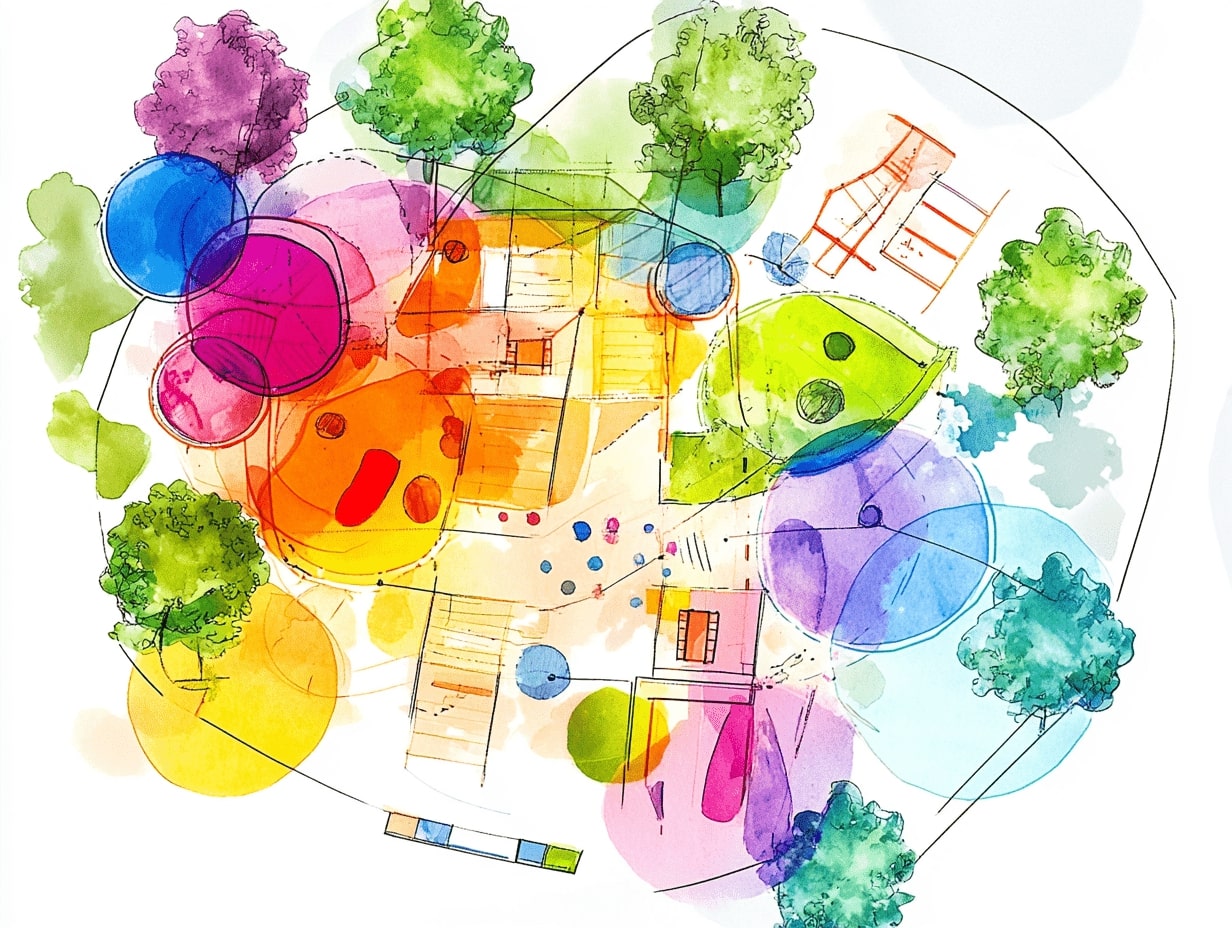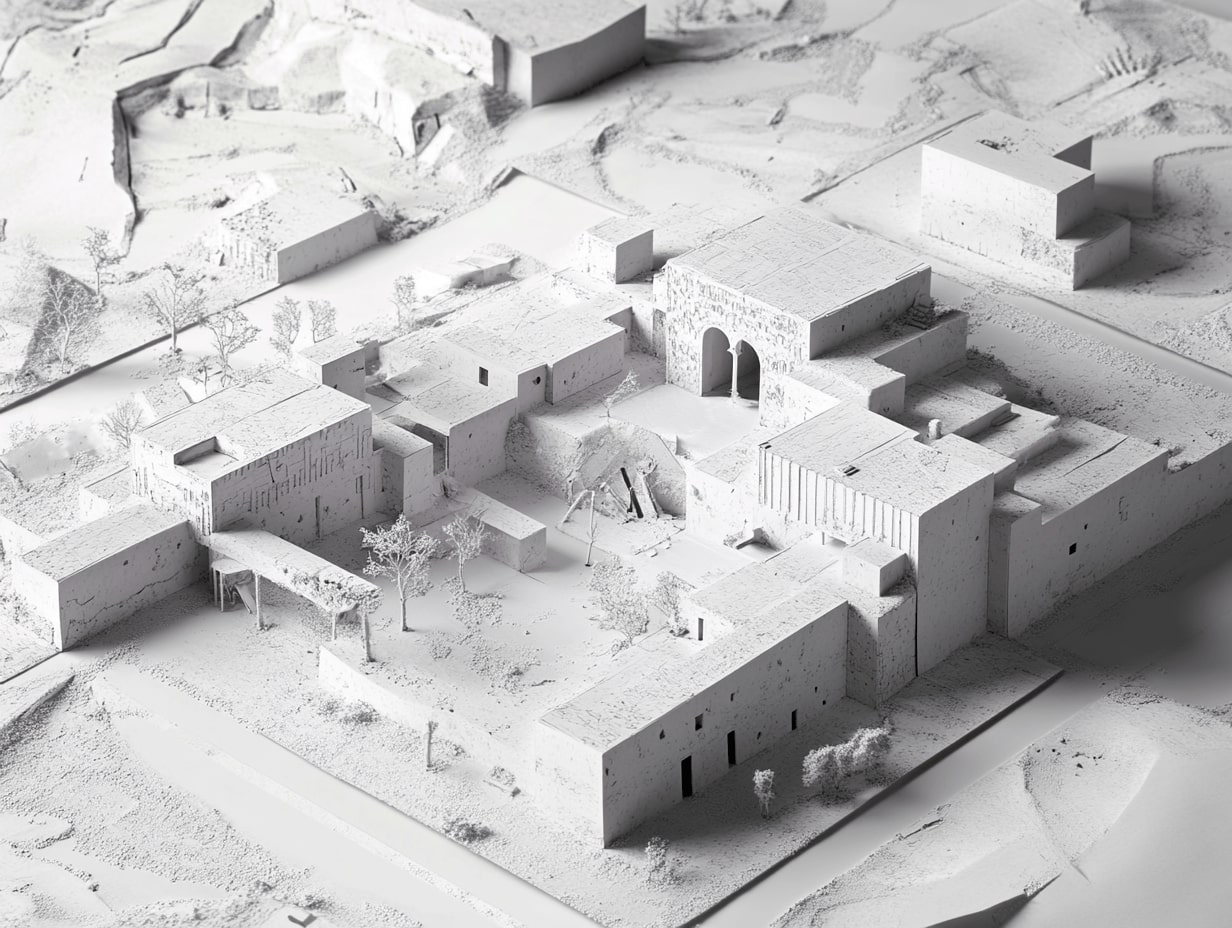- Home
- Articles
- Architectural Portfolio
- Architectral Presentation
- Inspirational Stories
- Architecture News
- Visualization
- BIM Industry
- Facade Design
- Parametric Design
- Career
- Landscape Architecture
- Construction
- Artificial Intelligence
- Sketching
- Design Softwares
- Diagrams
- Writing
- Architectural Tips
- Sustainability
- Courses
- Concept
- Technology
- History & Heritage
- Future of Architecture
- Guides & How-To
- Art & Culture
- Projects
- Interior Design
- Competitions
- Jobs
- Store
- Tools
- More
- Home
- Articles
- Architectural Portfolio
- Architectral Presentation
- Inspirational Stories
- Architecture News
- Visualization
- BIM Industry
- Facade Design
- Parametric Design
- Career
- Landscape Architecture
- Construction
- Artificial Intelligence
- Sketching
- Design Softwares
- Diagrams
- Writing
- Architectural Tips
- Sustainability
- Courses
- Concept
- Technology
- History & Heritage
- Future of Architecture
- Guides & How-To
- Art & Culture
- Projects
- Interior Design
- Competitions
- Jobs
- Store
- Tools
- More
Understanding Architectural Programmes & Functions Diagrams

In the world of architecture, understanding the layout and functionality of a space is crucial before the first brick is even laid. That’s where architectural programmes and functions diagrams come into play. These diagrams serve as the backbone of project planning, offering a visual representation of the activities and spaces within a building. They’re not just drawings but a strategic tool that aligns the project’s vision with its physical reality.
By integrating programmes and composition with sectional, planimetric, and axonometric diagrams, architects can meticulously allocate spaces according to their intended use. Whether it’s defining the flow between rooms or determining the scale of each area, these diagrams ensure every inch of space serves its purpose. They’re the first step in bringing a concept to life, setting the stage for more detailed structural plans down the line.
As we dive deeper, we’ll explore how these diagrams not only facilitate the efficient use of space but also embody the very essence of architectural design. From the initial sketch to the final blueprint, understanding architectural programmes and functions diagrams is key to creating buildings that are both functional and aesthetically pleasing.

Table of Contents
ToggleUnderstanding Architectural Programmes and Functions Diagrams
The Role of Diagrams in Architecture
Architectural programmes and functions diagrams serve as crucial tools in the field of architecture, bridging the gap between a project’s conceptual vision and its physical realization. These diagrams simplify the complex nature of architectural planning, allowing stakeholders to visualize the distribution and organization of spaces within a building. Through the systematic breakdown of spaces or functions, such as reception areas, waiting rooms, and offices, architectural diagrams make it possible to allocate each square foot of space intentionally.
In essence, these diagrams act as a language for architects, designers, and clients, enabling them to communicate ideas, explore different configurations, and make informed decisions about the layout and design of spaces. By representing diverse functions with distinct colors, text, and icons, they provide a clear overview of the building’s program, facilitating efficient use of space and enhancing the building’s functionality.
Moreover, architectural diagrams play an indispensable role in the early stages of the design process. They serve as a foundation for brainstorming sessions, helping teams to identify and settle on the most effective layout and configuration of spaces within a project. This early involvement ensures that every aspect of the building is designed with a purpose, maximizing usability and aligning with the project’s goals.
Key Components and Symbols
Understanding the key components and symbols used in architectural programmes and functions diagrams is vital for deciphering the complexities of a building’s design. These diagrams often employ a variety of symbols to denote different spaces and functions, making the representation of the building’s layout both comprehensive and easy to navigate.
Symbols in these diagrams can range from simple geometric shapes used to represent rooms and areas, to more detailed icons that indicate specific functions, such as electrical rooms, stairways, or restrooms. Colors and shading further differentiate between distinct spaces, highlighting areas designated for primary activities versus unassigned or circulation spaces, like corridors and mechanical rooms.
A crucial aspect of these diagrams is their ability to convey the net to gross ratio, a metric that measures the efficiency of a building by comparing usable space to the total building area. This ratio is a key factor in evaluating a building’s design, as it reflects how space is allocated and utilized, impacting the overall functionality and operational efficiency of the structure.
Text annotations play another role, providing essential information about each space’s purpose and requirements. These annotations can include details on dimensions, intended use, or specific features that must be incorporated into the design, ensuring clarity and alignment with the project’s goals.
Architectural programmes and functions diagrams are instrumental in the planning and design of buildings, offering a visual representation that facilitates decision-making and improves communication among stakeholders. By understanding the key components and symbols used in these diagrams, one can gain deeper insights into a building’s architecture and ensure that every space is designed with intention and purpose.

Differentiating Architectural Diagrams from Other Drawings
When discussing architectural design, it’s crucial to understand the distinctions between various types of drawings and diagrams. Each serves its unique purpose in the planning and execution phases of a project. In this section, we’ll delve into how architectural diagrams differ from other technical drawings and the specific role they play in architectural representation.
Diagrams vs. Technical Drawings
Architectural diagrams and technical drawings are both vital in the architecture and construction industries, but they serve different purposes. Diagrams are often used in the early stages of design to convey concepts and spatial relationships. They are abstract, focusing on the idea rather than precise dimensions or materials. Diagrams aim to visualize the functional aspects of a building, such as circulation patterns and the allocation of spaces according to their intended use.
On the other hand, technical drawings are meticulous and detail-oriented. They provide comprehensive information required for construction, including precise dimensions, materials, and construction techniques. Such drawings are indispensable for the actual building process, ensuring that every component fits together as intended. Tools like AutoCAD facilitate creating individual technical drawings, while BIM (Building Information Modeling) software, such as Autodesk Revit, allows for automatic generation of construction documents from 3D models. This distinction highlights the transition from conceptual visualization to actionable construction plans.
The Language of Architectural Representation
Architectural diagrams act as a unique language that bridges the gap between an architect’s vision and the final constructed form. This language leverages symbols, annotations, and spatial relationships to communicate complex design concepts in an understandable way. Unlike technical drawings, which require specific construction knowledge to interpret, diagrams provide a more accessible overview of a project’s architectural programmes and functions.
This visual language enables architects, designers, clients, and stakeholders to engage in productive discussions about a building’s design before committing to detailed plans. It’s an essential tool for brainstorming, exploring alternative solutions, and making informed decisions about space organization, enhancing the building’s functionality and user experience. Through diagrams, the conceptual essence of a building is distilled, allowing for a clear expression of architectural ideas and an effective strategy for realizing those concepts in physical form.
By understanding the distinct roles and applications of architectural diagrams and technical drawings, we can appreciate the depth and complexity of architectural representation and the meticulous planning that underpins successful building designs.

Types of Architectural Programmes and Functions Diagrams
When it comes to architectural design, understanding the various types of programmes and functions diagrams is crucial. These diagrams serve as vital tools to effectively communicate the spatial and functional relationships within a building project. Let’s delve into the specifics of the different diagrams used to represent these relationships.
Programmatic Diagrams
Programmatic diagrams are at the core of architectural planning, laying the groundwork for spatial allocation based on intended use. They typically represent the connection between different spaces and their designated functions within the structure. Utilizing a combination of sectional, planimetric, and axonometric views, these diagrams show how specific activities or spaces are distributed across the project site. For instance, a programmatic diagram might illustrate how public and private areas are separated or how departments within a building are organized. The effectiveness of these diagrams lies in their ability to convey complex programmatic relationships in an understandable visual format, thus facilitating early decision-making in the design phase.
Space-Function Relationship Diagrams
Diving deeper into spatial planning, space-function relationship diagrams provide a detailed analysis of how each area of a building is purposed to serve its function. These diagrams go beyond basic space allocation, illustrating the dynamics between different functions and the architectural environments designed to accommodate them. By highlighting the specific needs of each space—such as connectivity, privacy levels, and proximity to related functions—these diagrams play a critical role in optimizing the building layout for efficiency and user experience. For example, a space-function diagram can showcase the layout of a healthcare facility, ensuring that critical areas like emergency rooms and operating theaters are easily accessible, while administrative offices are placed in quieter, more secluded areas.

Zoning and Circulation Diagrams
Zoning and circulation diagrams focus on the segmentation of spaces based on their use and the flow of movement within and around those spaces. Zoning diagrams segment the building into distinct areas with shared functions, enhancing the organizational schema of the project. Circulation diagrams, on the other hand, map out the pathways that connect these zones, including entry and exit points, hallways, and public versus private routes. Together, these diagrams provide a holistic view of the spatial strategy, addressing both the static aspects of space usage and the dynamic patterns of human movement. By pinpointing the ideal placement for different zones and designing efficient circulation networks, these diagrams ensure that the building layout supports seamless interactions and operational fluency.
In essence, our exploration of architectural programmes and functions diagrams reveals their indispensable role in the architectural design process. These diagrams serve as a bridge between conceptual visions and practical implementations, guiding architects, planners, and stakeholders through the complexities of spatial and functional organization.
Creating Effective Architectural Programmes Diagrams
Establishing Goals and Objectives
In crafting architectural programmes diagrams, our first step involves setting clear goals and objectives. This foundational phase determines the direction and purpose of the space planning, focusing on the end-use and the occupants’ needs. By answering critical questions such as the nature of the activities to be accommodated and the interactions these spaces should foster, we lay the groundwork for a purpose-driven design. We ensure that every aspect of the diagram serves the larger mission of the project, whether it’s enhancing functionality, bolstering sustainability, or simply elevating aesthetic appeal.
Synthesizing Information into Diagrams
Once goals and objectives are firmly in place, our next step is to synthesize the gathered information into coherent diagrams. This process involves translating abstract ideas and data into visual forms that succinctly communicate spatial relationships, functions, and flows. We use programmatic diagrams to allocate spaces based on intended use and function, space-function relationship diagrams to analyze how specific areas serve their purpose, and zoning and circulation diagrams to organize space and movement efficiently. This visual synthesis allows all stakeholders to grasp the complex interrelations within the building layout, ensuring everyone is aligned with the envisioned outcome.

Best Practices for Clarity and Impact
To ensure our architectural programmes diagrams are not only informative but impactful, we adhere to best practices that enhance clarity and understanding. This includes using standardized symbols and notations that are universally recognizable, thus eliminating ambiguity. We strive for simplicity, avoiding overcrowding the diagram with too much information that can detract from its core message. The design of the diagram also takes into account the ease of interpretation, ensuring that the key elements stand out and the overall flow of information is logical and intuitive. By adhering to these best practices, our diagrams serve as powerful tools that bridge the gap between conceptual visions and practical implementations in architectural design.
Tools and Techniques for Diagramming
In our journey to create impactful architectural programmes and functions diagrams, we explore a variety of tools and techniques that enhance our diagramming process. This exploration allows us to tailor our diagrams not just for clarity and precision, but also for engaging the audience by clearly communicating the intended spatial relationships and functions. Here, we delve into the comparison between software and hand sketching, and highlight some invaluable online resources for diagramming.
Software vs. Hand Sketching
In the realm of diagramming, the debate between software versus hand sketching holds significance. Each method offers distinct advantages that cater to different phases of the design process. Software applications, for example, provide precision and versatility. They allow us to efficiently work with layers, adjustments, and edits, making it easier to iterate designs rapidly. Programs such as AutoCAD, Revit, and SketchUp have become staples in our toolkit, enabling detailed work that’s easily shareable with clients and team members.
On the flip side, hand sketching offers unparalleled immediacy and creativity. It’s invaluable during the initial stages of conceptualization, where the freedom to explore ideas without constraints leads to innovation. Hand drawings foster a personal connection to the design, often capturing the essence of the idea with a few strokes. For us, integrating hand sketches into digital presentations brings a human touch to our proposals, bridging the gap between abstract concepts and tangible designs.

Online Resources for Diagramming
The internet abounds with resources that can assist in creating architectural programmes and functions diagrams. Websites like ArchDaily and Dezeen offer case studies and examples of diagrams from real projects, providing inspiration and benchmarks for our own work. These platforms showcase the diversity in diagrammatic representation, helping us to see past conventional formats and explore innovative ways to communicate our design intentions.
Moreover, tutorial platforms such as Lynda.com and Coursera offer courses on architectural diagramming, covering both software skills and conceptual approaches to visual communication. These resources have been instrumental in refining our techniques, promoting a balance between aesthetic appeal and informational clarity.
Additionally, online forums and communities, such as the Autodesk forums and Reddit’s architecture subreddit, provide spaces to share insights, receive feedback, and collaborate on diagramming challenges. Engaging with these communities enriches our practice by exposing us to diverse perspectives and solutions.
Incorporating both traditional and digital tools, along with leveraging online resources, enriches our diagramming process. It ensures not only efficiency and precision but also creativity and innovation in our architectural programmes and functions diagrams. Our commitment to exploring and utilizing these tools and resources enables us to succinctly convey complex spatial relationships and functions, ultimately enhancing the clarity and impact of our architectural designs.
Submit your architectural projects
Follow these steps for submission your project. Submission FormLatest Posts
Top 6 Software Architecture Diagram Secret Tricks Every CS Student Should Know in 2025-26
Read this article to learn simple and effective ways to create software...
Architecture Site Analysis Site Visit: A Guide to Better Design and Sustainability
Discover the importance of architecture site analysis and site visits in creating...
Unlocking Creativity: The Power of Architecture Bubble Diagrams in Design Process
Discover the vital role of bubble diagrams in architecture, enhancing clarity and...
Essential Tips for Evaluating Your Architectural Site Analysis for Successful Projects
Discover the key to successful architectural design with a thorough evaluation of...












Leave a comment